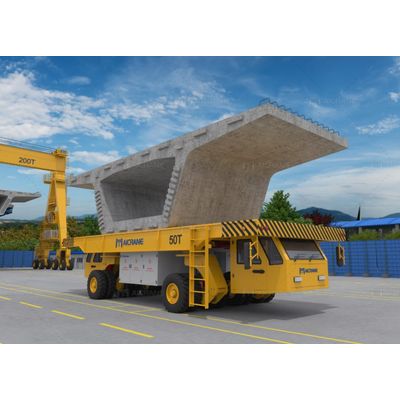

- Home
- Companies
- Aimix Group Co., Ltd
- Articles
- The Versatile Applications of Hydraulic ...

The Versatile Applications of Hydraulic Transporters
Hydraulic transporters have emerged as powerful and versatile tools, revolutionizing the way materials are moved and manipulated in various industries. These innovative machines leverage hydraulic power to provide efficient and precise transportation solutions. From construction sites to manufacturing facilities, hydraulic transporters play a crucial role in enhancing productivity and streamlining processes. In this article, we will explore the specific uses of hydraulic transporters, shedding light on their diverse applications and the benefits they bring to different sectors.
Construction Industry:
In the construction industry, where the movement of heavy materials is a daily necessity, hydraulic transporters have become indispensable. These machines are adept at transporting construction materials, such as steel beams, concrete blocks, and pre-fabricated structures, across the job site. The hydraulic system allows for precise control and smooth operation, making it easier to navigate through challenging terrains and tight spaces. Additionally, hydraulic transporters contribute to increased efficiency by reducing manual labor and expediting the material handling process.
Mining Operations:
The mining industry relies heavily on hydraulic transporters to move large volumes of materials efficiently. These machines are instrumental in transporting minerals, rocks, and ore from the extraction site to processing facilities. The robust design of hydraulic transporters ensures they can withstand the harsh conditions often found in mining environments. The hydraulic systems provide the necessary power to handle heavy loads, enabling mining operations to run smoothly and with increased productivity.
Agriculture:
In agriculture, hydraulic transporters are utilized for various tasks, ranging from transporting harvested crops to moving equipment around the farm. These machines can be equipped with specialized attachments, such as trailers or bins, to accommodate different agricultural needs. The precision offered by hydraulic systems allows farmers to handle delicate crops without causing damage. Additionally, hydraulic transporters contribute to time and labor savings, ultimately improving the overall efficiency of farm operations.
Manufacturing Facilities:
Within manufacturing facilities, hydraulic transporters play a crucial role in materials handling and logistics. These machines are employed to move raw materials, semi-finished products, and finished goods between different stages of the production process. The versatility of hydraulic transporters allows them to adapt to the diverse needs of manufacturing operations. The ability to handle heavy loads with precision ensures a smooth and seamless workflow, contributing to increased production efficiency.
Shipbuilding:
In the shipbuilding industry, where the assembly of large and heavy components is a complex task, hydraulic transporters are employed to move ship sections and modules within the shipyard. The ability to lift and transport massive loads with precision is vital in ensuring the accurate alignment and assembly of various ship components. Hydraulic transporters enhance the overall efficiency of shipbuilding processes, allowing shipyards to meet strict deadlines and deliver high-quality vessels.
Renewable Energy Projects:
Hydraulic transporters are increasingly being utilized in renewable energy projects, particularly in the installation of wind turbines and solar panels. These machines aid in the transportation of large components, such as turbine blades or solar panel arrays, to the installation site. The adaptability of hydraulic transporters to challenging terrains and their ability to handle heavy loads make them invaluable in the construction and maintenance of renewable energy infrastructure.
Conclusion:
In conclusion, hydraulic transporters have evolved into versatile workhorses across various industries, offering efficient and precise material handling solutions. From construction and mining to agriculture and manufacturing, these machines have become integral to improving productivity and streamlining processes. The robust design and advanced hydraulic systems of these transporters enable them to tackle challenging tasks and contribute to the success of diverse projects. As technology continues to advance, the role of hydraulic transporters is likely to expand, further enhancing their utility in meeting the evolving needs of industries worldwide.
